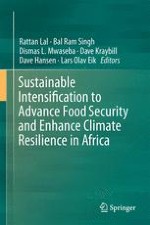2015 | OriginalPaper | Chapter
19. Reducing GHG Emissions from Traditional Livestock Systems to Mitigate Changing Climate and Biodiversity
Authors : Daniel E. Mushi, Lars Olav Eik, A. Bernués, R. Ripoll-Bosch, F. Sundstøl, M. Mo
Published in: Sustainable Intensification to Advance Food Security and Enhance Climate Resilience in Africa
Publisher: Springer International Publishing
Activate our intelligent search to find suitable subject content or patents.
Select sections of text to find matching patents with Artificial Intelligence. powered by
Select sections of text to find additional relevant content using AI-assisted search. powered by
